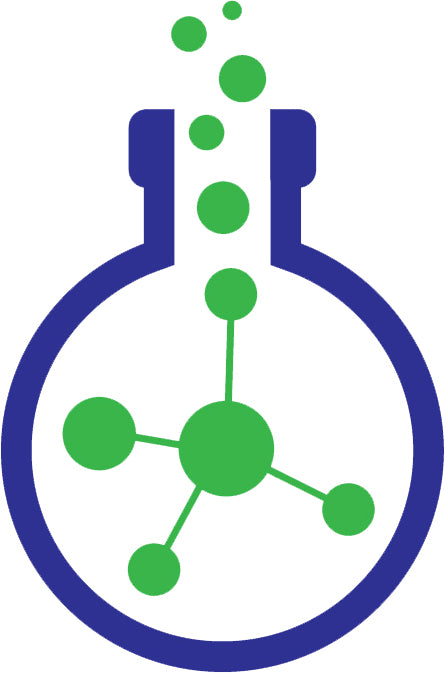BPC-157 vs TB-500: Which Is Best for Injury Recovery?
In the world of regenerative medicine and advanced healing therapies, few compounds have gained as much attention as BPC-157 and TB-500. Both are classified as research peptides with exceptional reputations for injury recovery — especially when it comes to soft tissue repair, chronic pain, inflammation, and surgical rehabilitation.
But how do they differ? Is one better than the other? Or is the combination truly greater than the sum of its parts?
This guide breaks down the science, mechanisms, and real-world applications of each peptide, giving researchers and practitioners a clear roadmap for selecting the right tool — or blend — for enhanced recovery outcomes.
Understanding the Mechanisms: How Each Peptide Works
BPC-157: Targeted Regeneration and Inflammation Control
BPC-157 (Body Protection Compound-157) is a 15-amino-acid peptide derived from a protective protein found in human gastric fluid. Its mechanism is remarkable for its multi-systemic healing effects, driven by:
-
Angiogenesis: Stimulates formation of new blood vessels in injured tissue
-
Growth factor modulation: Upregulates VEGF, TGF-β, and GH receptor expression
-
Anti-inflammatory effects: Reduces pro-inflammatory cytokines like TNF-α and IL-6
-
Tissue-specific targeting: Homes in on injury sites (especially tendons, ligaments, muscle) to accelerate repair
It is especially powerful in poorly vascularized tissues like tendons and ligaments — the areas that often heal slowly or incompletely.
TB-500: Systemic Cell Migration and Tissue Regeneration
TB-500 is the synthetic version of Thymosin Beta-4, a naturally occurring peptide involved in cellular repair. Its primary mechanism centers around:
-
Actin regulation: Enhances actin polymerization to promote cell movement and structure
-
Cell migration: Mobilizes stem cells, fibroblasts, and immune cells to injury sites
-
Angiogenesis: Encourages new blood vessel growth
-
Scar reduction: Modulates fibrosis and supports proper collagen alignment
-
Inflammation resolution: Balances inflammatory signaling to reduce chronic damage
Unlike BPC-157, TB-500 operates more systemically, benefiting widespread injuries or generalized inflammation.
Clinical Applications and Evidence
BPC-157 in Research and Practice
BPC-157 has been shown to:
-
Heal torn ligaments, tendons, and muscle in rodent models
-
Regenerate cartilage and protect chondrocytes under inflammatory stress
-
Accelerate post-surgical recovery (rotator cuff, ACL, Achilles, etc.)
-
Improve healing in ulcerative colitis and even traumatic brain injuries
Its oral and injectable forms offer unique versatility — although for musculoskeletal repair, injectable subcutaneous administration remains the gold standard.
TB-500 in Research and Practice
TB-500 has been studied for:
-
Tendon and ligament healing in animal models
-
Accelerated recovery from muscle tears and soft tissue injuries
-
Improved outcomes in myocardial and corneal repair
-
Use in racehorses for joint, tendon, and ligament injuries — a gateway to its use in humans
Its longer half-life makes TB-500 especially useful for patients wanting less frequent dosing and systemic anti-inflammatory support.
When to Use Each Peptide
| Use Case | Recommended Peptide |
|---|---|
| Localized tendon or ligament injury | BPC-157 |
| Widespread inflammation or injury | TB-500 |
| Post-surgical tissue regeneration | BPC-157 + TB-500 |
| Chronic joint pain with poor circulation | BPC-157 + TB-500 |
| Athletic overuse injuries or rapid rehab | Combo blend |
| Daily injection compliance is an issue | TB-500 (less frequent dosing) |
Synergy: Why the BPC-157 + TB-500 Blend Is Often Superior
While both peptides are effective on their own, their mechanisms are complementary. BPC-157 works locally and promotes targeted regeneration, while TB-500 works systemically and optimizes cellular movement, repair coordination, and anti-inflammatory resolution.
This synergy has led to the widespread use of combined peptide therapies, where researchers and clinics administer both in tandem — or simply use a pre-formulated blend like the one offered by Elevate Peptide Lab.
Why Elevate Peptide Lab’s Blends Stand Out
At Elevate Peptide Lab, both BPC-157, TB-500, and the BPC-157/TB-500 blend are:
-
Manufactured to >99% purity
-
Supplied as lyophilized powder for maximum stability
-
Shipped with full certificates of analysis (COA)
-
Backed by high demand from biohackers, physicians, and fitness professionals
The BPC-157/TB-500 blend in particular offers unmatched convenience: one vial, one reconstitution, dual-action healing.
Safety, Dosing, and Administration
-
BPC-157: 250–500 mcg daily via subcutaneous injection near the injury site. Some oral use has been explored.
-
TB-500: 2–5 mg 1–2x weekly during loading phase; taper to 2–5 mg weekly for maintenance.
-
Blend: Common dosing is 500 mcg BPC + 2–3 mg TB-500 per injection, daily or every other day during rehab phase.
Both peptides are for research use only and not FDA-approved. They are unscheduled but banned in some competitive sports contexts (WADA-listed). No significant side effects have been reported in research when used at standard doses.
Conclusion: Which Peptide Is Right for You?
If the goal is precision repair — especially to ligaments and tendons — BPC-157 excels.
If the goal is broad tissue support, systemic inflammation reduction, and enhanced cell movement, TB-500 offers strong advantages.
But in most real-world recovery cases, the answer isn’t either-or.
The BPC-157 + TB-500 combination delivers a complete regenerative solution — and the pre-formulated blend from Elevate Peptide Lab simplifies research without compromising quality or potency.
Important Notice
Our peptides are sold for research purposes only. Results may vary. We recommend consulting a licensed medical professional before beginning any new peptide or supplement regimen.


